Wonder wall: 8 places to discover Hadrian's Wall
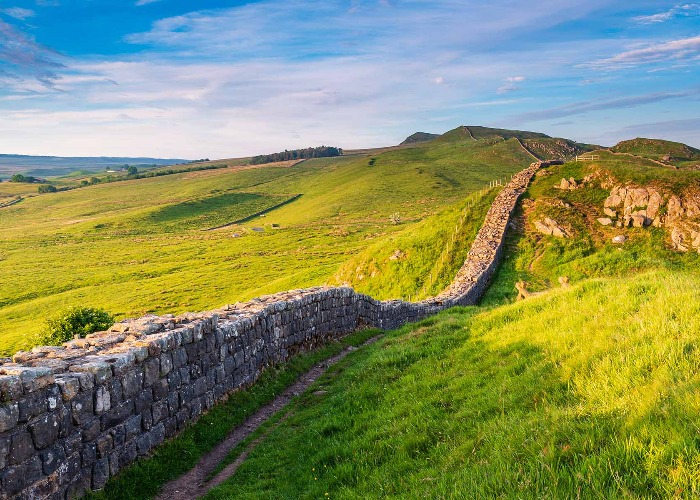
One of Britain’s great, man-made wonders once ran the length of modern-day northern England. And there are plenty of well-preserved spots where you can soak up its history today – these are the best places to see Hadrian's Wall.
When complete, the mighty Hadrian's Wall ran for a whopping 80 Roman miles – a little over 73 modern miles (118km) – between forts at Wallsend and Bowness-on-Solway. The ambitious vision of its namesake, Roman Emperor Hadrian, it was created after the ruler visited his province of Britannia in AD 122 and ordered the fortification of its northern frontier.
Today the wall's multi-millennia-old remnants still awe and they form part of UNESCO’s transnational Frontiers of the Roman Empire heritage site. Feeling inspired? Whisk yourself back some 2,000 years and take a look at the best places to see Hadrian’s Wall.
1. Segedunum Roman Fort, Wallsend
No prizes for guessing how Wallsend, once the eastern extremity of Hadrian’s Wall, earned its name.
The town lies about four miles (6km) east of central Newcastle upon Tyne – a 10-minute Metro ride from the city’s Monument station. A tip of the hat to Wallsend’s historic significance, signs at its station are translated into Latin, the Roman Empire’s principal language.
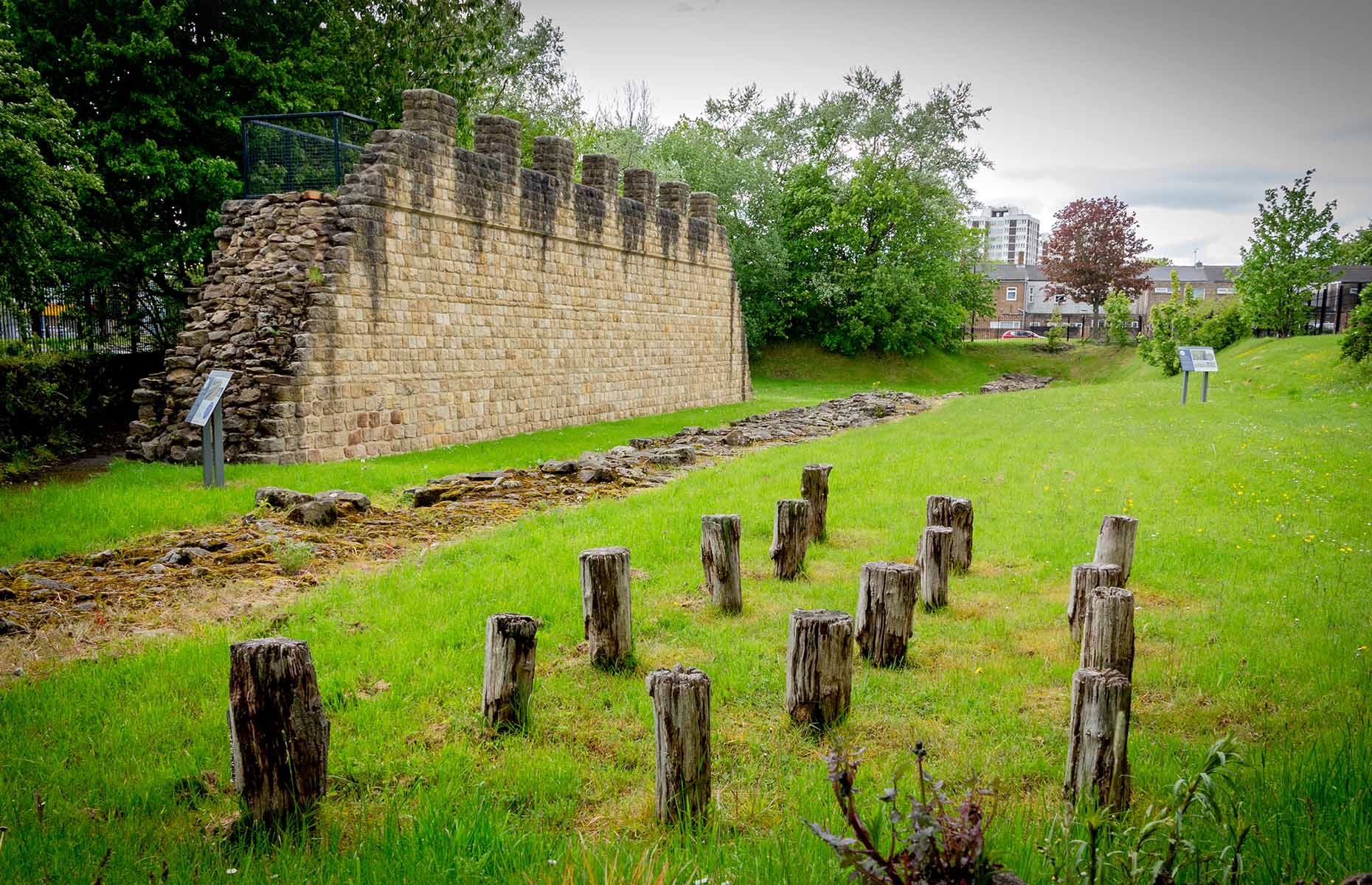 larry mcguirk/Shutterstock
larry mcguirk/Shutterstock
Long-buried beneath terraced housing, archaeological excavations a generation ago uncovered the layout of fascinating Segedunum Roman Fort. As well as the clearly defined original design, which you can view from an observation tower, the site hosts a reconstructed bathhouse and section of the wall (pictured).
The on-site museum is a must-visit too. It’s home to artefacts contextualising life on Britannia’s northern frontier, including a well-used stone latrine seat.
2. Arbeia South Shields Roman Fort
South of the River Tyne, the hulking fort known to the Romans as Arbeia helped guard the eastern fringe of Hadrian’s Wall.
A 10-minute walk from South Shields Interchange, the excavated fort features the foundations of several granaries – from Arbeia, supplies were transported along the frontier. The compact museum tells this story and displays beguiling archaeological finds, including inscribed altarpieces and jewellery.
READ MORE: Beautiful treasures the ancient Romans left us
Reconstructions of a barrack block, the commanding officer’s quarters and the western gate offer a captivating picture of how Arbeia and other forts looked 19 centuries ago. Meanwhile, earthworks outside the gate show the formidable ditches that potential attackers needed to cross simply to reach forts along the wall.
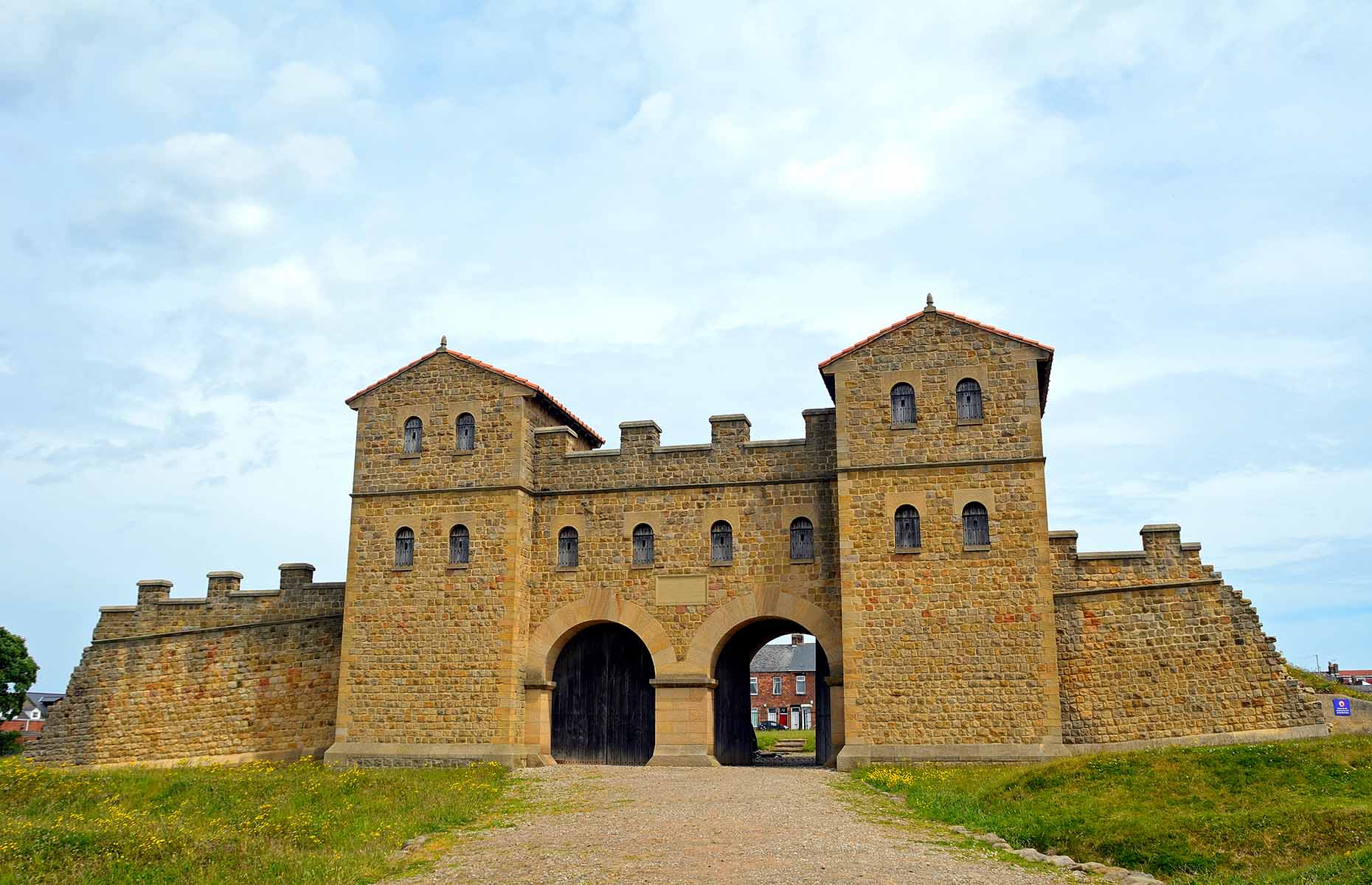 Attila JANDI/Shutterstock
Attila JANDI/Shutterstock
3. Newcastle
On the ground floor of one of Newcastle’s most multifaceted museums – The Great North Museum: Hancock – you’ll find the Hadrian’s Wall Gallery. The absorbing site does a great job of explaining the construction and history of the frontier fortifications and displays artefacts that were excavated along the wall. These include a stone slab bearing a Latin inscription indicating when the building of the barrier began.
The wall swept westward along a line which today passes Newcastle Castle, the city’s Literary and Philosophical Society and Central Station. Outside of the station, buses from Stand A head towards Denton Hall, the location of a turret and knee-high section of wall. The mop-haired bust of the god Antenociticus, displayed in the Hancock, was excavated nearby at Benwell Roman Temple too.
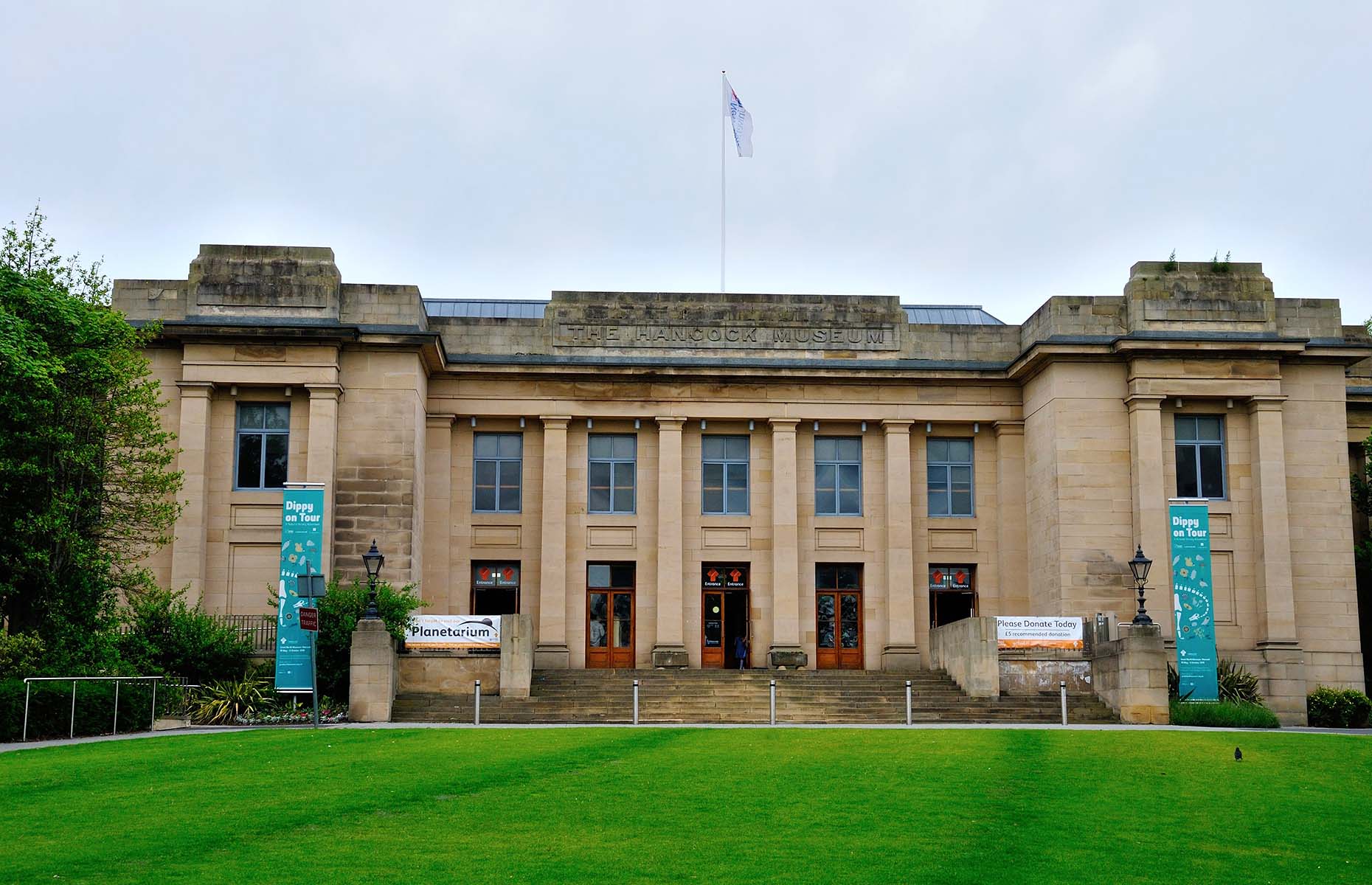 Nina Alizada/Shutterstock
Nina Alizada/Shutterstock
4. Chesters Roman Fort
After Rome’s authority over Britain waned, the wall was plundered by medieval builders for its ready-made supply of stone. This explains why the most impressive remaining stretches of Hadrian’s Wall are away from urban areas.
Chesters Roman Fort, north of Hexham, is the UK’s best-preserved ancient cavalry fort. The Romans knew it as Cilurnum and garrisoned the site with 500 troops. Today, the gates they rode through are clear to see, as well as the foundations of the commanding officer’s house. Most spectacular of all is the sizable bathhouse where off-duty soldiers socialised – the lichen-spotted walls rise well above head height. The site’s museum holds an array of archaeological finds too.
READ MORE: UK's amazing World Heritage Sites
 John M Rodgers/Shutterstock
John M Rodgers/Shutterstock
5. Housesteads Roman Fort
One of the most exciting ways to explore the 'Roman Wall', as locals often call it, is to walk along it. The car park at Housesteads Visitor Centre is a popular starting point for rambles along one of the best-preserved sections.
A footpath leads up towards Housesteads Roman Fort, strategically positioned for commanding views over countryside in what’s now Northumberland National Park, with its woodland, meadows and moors. Foundations of a barrack block and communal toilets are visible inside the playing card-shaped fortification.
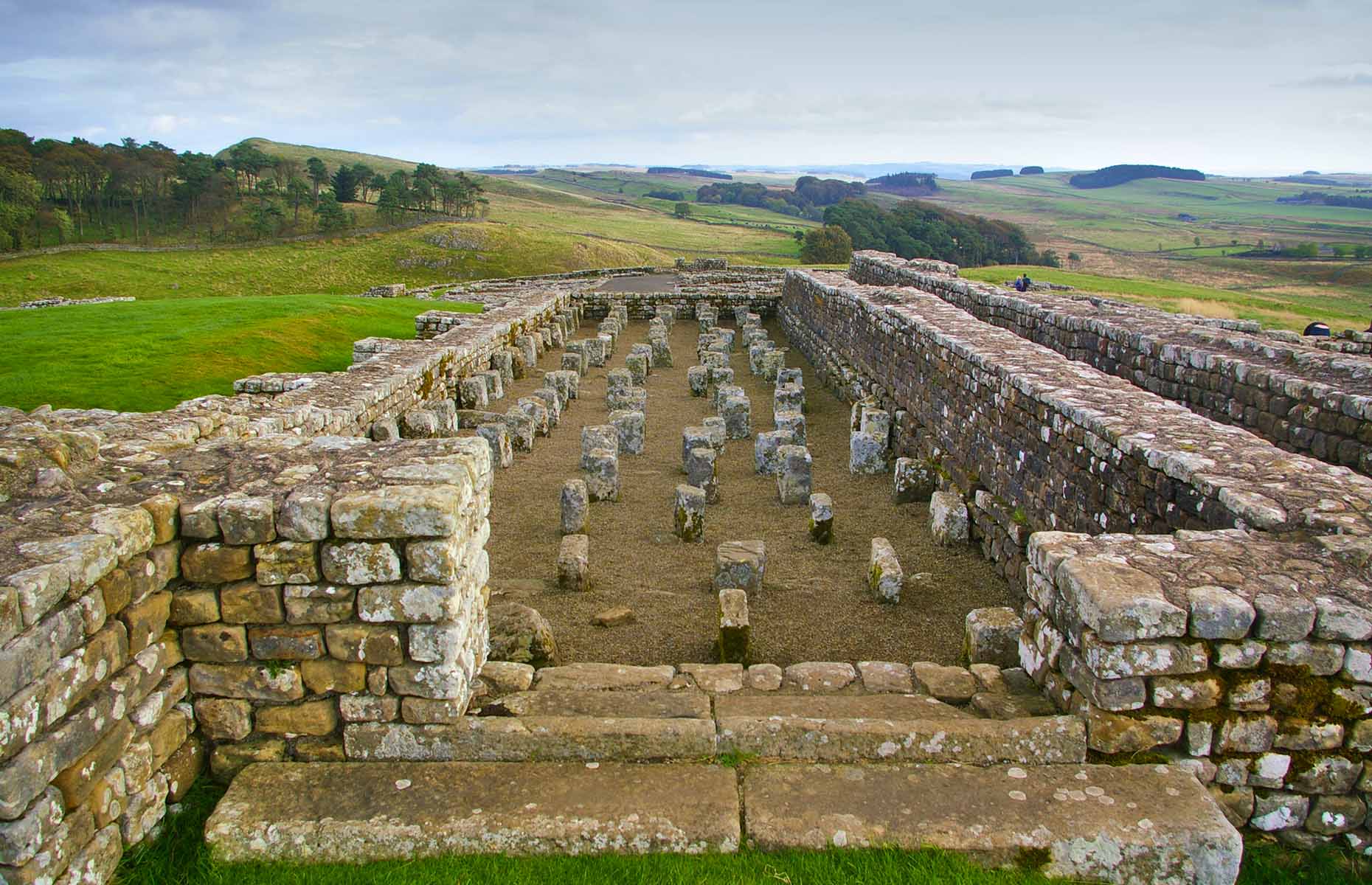 Harald Schmidt/Shutterstock
Harald Schmidt/Shutterstock
Want to get the kids involved? Little ones can dress like Roman soldiers at the site’s museum. The hillside building also displays ancient finds and explains what life was like on Britannia’s frontier 1,900 years ago.
6. Sycamore Gap
Sycamore Gap is the kind of place that loves the camera, it's name inspired by a lone sycamore that stands sentry at the base of a dip along the course of the wall.
It's visible from the B6318 but a more scenic way of visiting Sycamore Gap is during a five-mile (8km) circular walk from Housesteads. The footpath skirts the Highshield Crags, a rocky outcrop above Crag Lough, a lake formed during the last Ice Age. The ridge immediately east of Sycamore Gap is ideal for viewing the ancient wall ribbon across Northumberland’s rugged landscape.
READ MORE: England's most beautiful places, ranked
Thanks to Northumberland International Dark Sky Park’s low light pollution, this spot is a popular location for astrophotography too. On clear nights, the Milky Way and, under ideal conditions, the Northern Lights can be seen painting the skies above the wall.
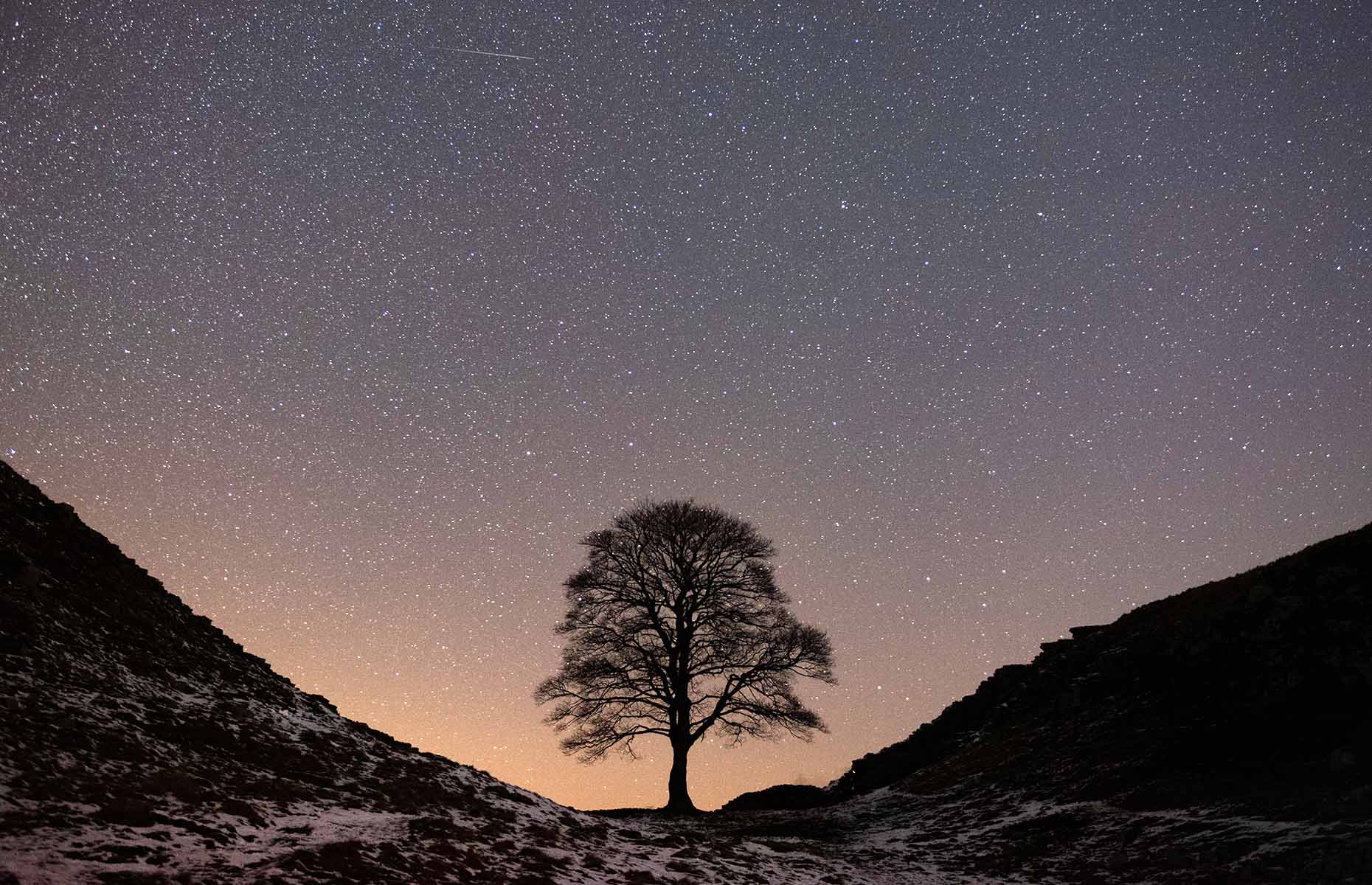 mark mc neill/Shutterstock
mark mc neill/Shutterstock
7. Willowford, near Gilsland
Park up at the quaint Cumbrian village of Gilsland and strike out in search of the ancient frontier at Willowford. The wall stood around 12-feet (4m) high during its heyday and the impressive tract at Willowford still surpasses nine feet (2.8m).
Like the wall further eastward, the base of this well-preserved section of the frontier is also nine-feet (2.8m) thick. Construction plans were clearly amended as it rises from the base with a width of ‘just’ seven feet (2.1m).
A footpath wiggles alongside the wall as it drops towards the Irthing, one of the three rivers spanned by the imperial frontier. An abutment once supporting a Roman bridge over the Irthing stands within earshot of the gushing waterway’s modern course.
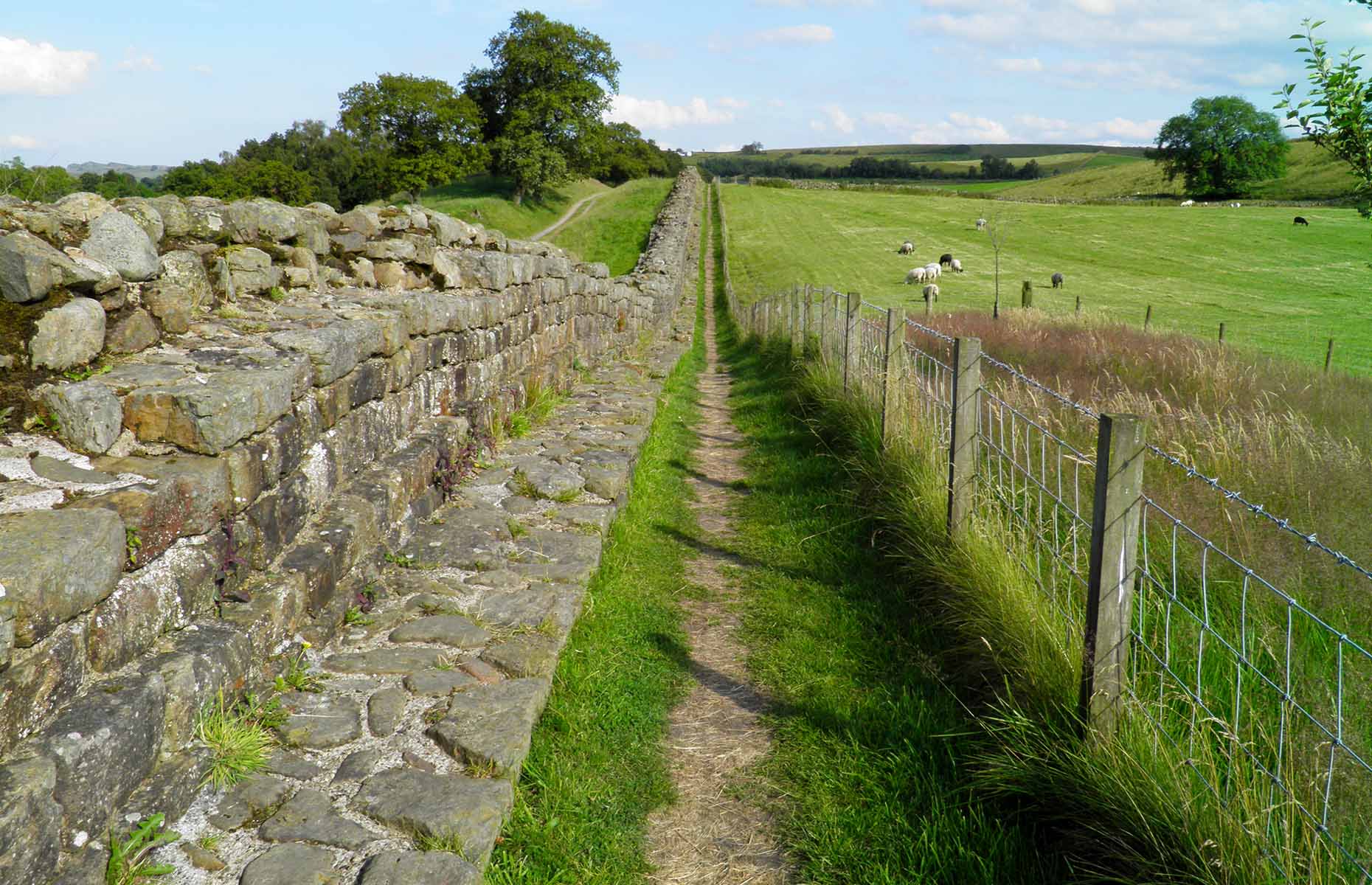 Carole Raddato/Flickr/CC BY 2.0
Carole Raddato/Flickr/CC BY 2.0
8. Harrows Scar Milecastle and Wall
The longest remaining section of the wall stands either side of Birdoswald Roman Fort – and the carpark near the fort is perfectly placed for following the footpath eastward towards Harrows Scar Milecastle.
Overlooking surrounding fields from a striking hilltop position, Harrows Scar is one of the strongpoints that stood between forts. As their name suggests, milecastles were spaced one Roman mile apart.
READ MORE: The world's most stunning medieval sights
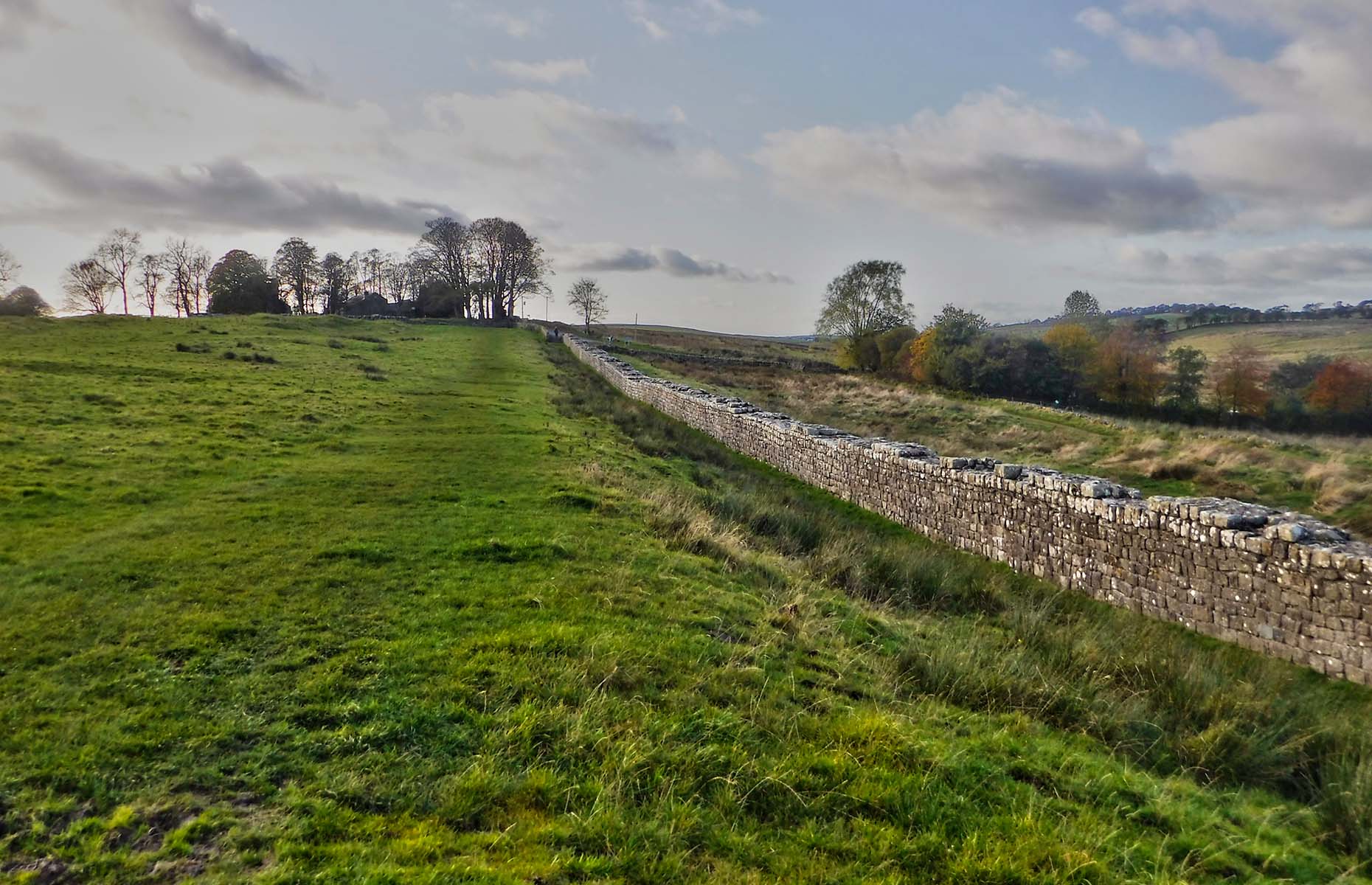 jcw1967/Flickr/CC BY-NC-ND 2.0
jcw1967/Flickr/CC BY-NC-ND 2.0
Immediately west of the River Irthing, the milecastle is on a stretch of the fortified frontier that was rebuilt in stone during the late 2nd century. Soldiers constructed the westernmost stretch of Hadrian’s Wall from turf and use of that material explains why stonework remains sadly can’t be seen around the Solway Firth.
Lead image: Dave Head/Shutterstock
Comments
Be the first to comment
Do you want to comment on this article? You need to be signed in for this feature